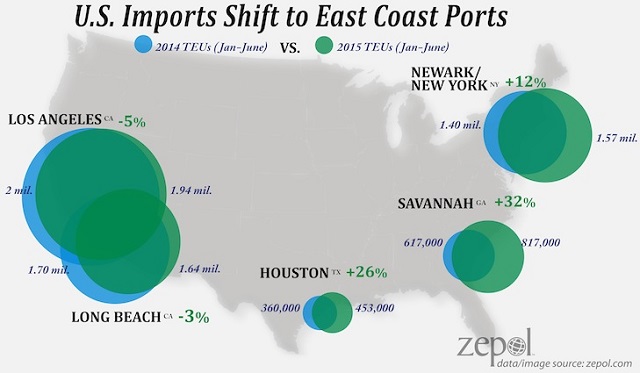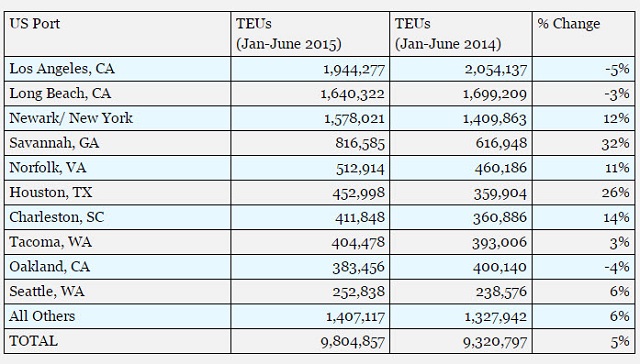U.S. Sees Major Freight Shift from West to East
By Cori Rogers
Are imports moving to the East Coast? The answer, yes. Zepol found that a hefty chunk of businesses have switched from using Pacific to Atlantic and Gulf ports this year. Total imports along the East Coast have increased by 15 percent, while import traffic on the West Coast is down four percent.

It’s crazy to think that freight going all the way from Asia to Eastern and Gulf ports is the best option for some importers, but China is actually the main instigator behind the supply chain shift. Imports from China along the West Coast declined by three percent, but Chinese imports on the East Coast continue to skyrocket. Atlantic ports increased containers from China by 20 percent this year, and Gulf ports by a more dramatic 43 percent.
“Shipments are setting sail for Eastern ports even before the Panama Canal expansion is complete,” explains Zepol’s CEO, and trade data expert, Paul Rasmussen. “Shippers may be fed up with West Coast backups, and with carriers adding more lines from Asia to the East Coast, it’s hard to blame them.”
The ports of Newark/New York, Savannah and Houston had the highest increase in imports for the first half of 2015 (compared with the same time in 2014). The Port of Newark/New York increased in imports by 12 percent, Savannah rose by 32 percent, and Houston by another 26 percent. The port of Houston also had a huge surge in containers from China. The port brought in 53 percent more Chinese containers already this year.
Below is table of the top 10 ports' import volume in 2015 compared with 2014 (Jan-June).

Data Note: The data in this report does not include empty containers, or shipments labeled as “freight remaining on board,” and may contain other data anomalies.
The opinions expressed herein are the author's and not necessarily those of The Maritime Executive.
